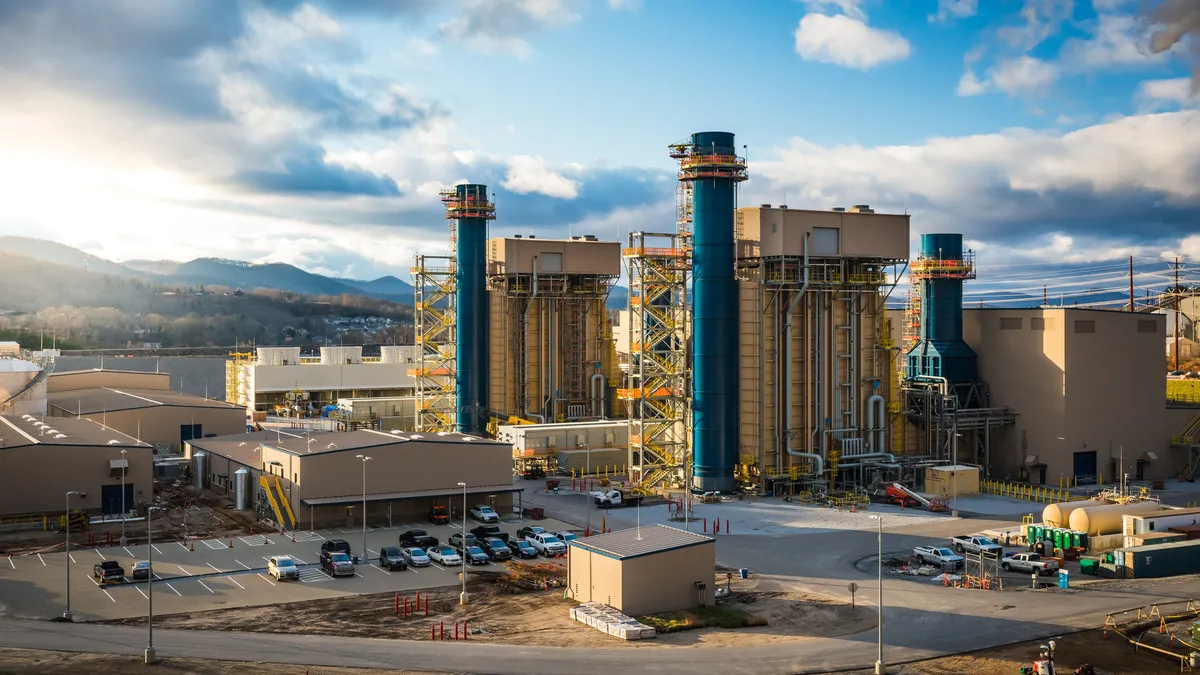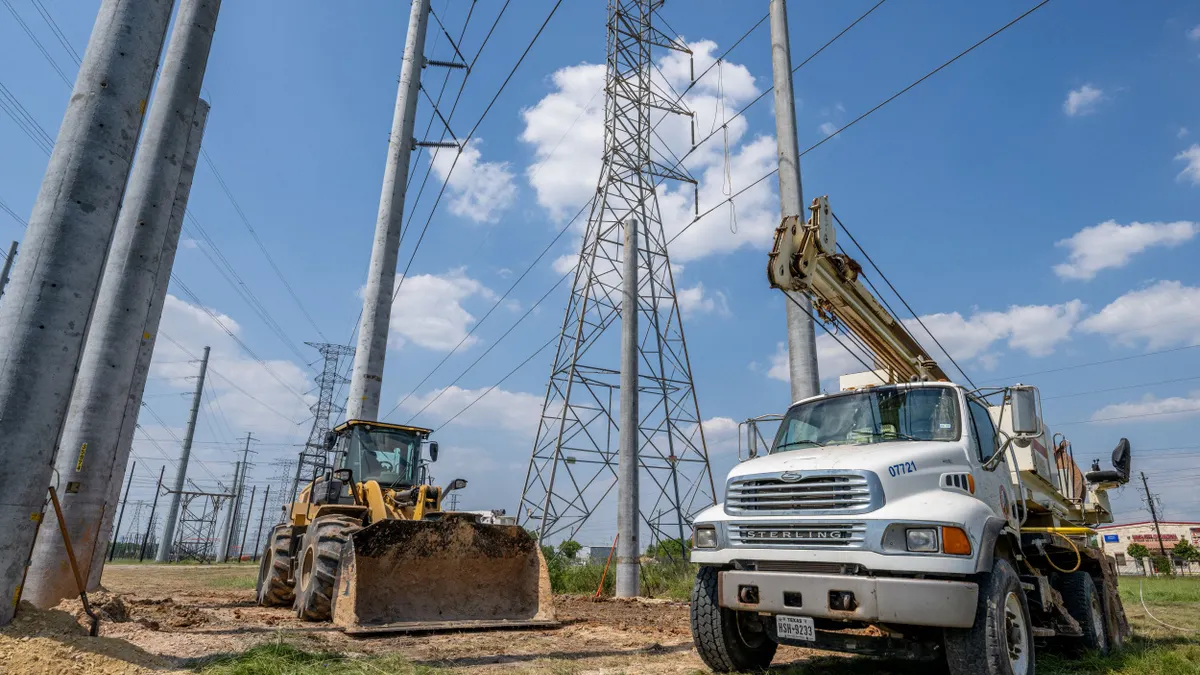The following is a contributed article by Rebecca Schultz, senior advocate for climate and clean energy at the Natural Resources Council of Maine.
On Nov. 2, nearly 60% of Maine voters supported a referendum to halt construction on the New England Clean Energy Connect (NECEC), a 145-mile high-voltage transmission corridor through the state. Since then, the Maine Department of Environmental Protection suspended the project's permit pending developments in NECEC's legal challenges to the referendum and the decision by the Maine Superior Court last August that deemed a critical public lands lease illegal.
The growing possibility that the NECEC will be terminated has raised concerns by some that there is an irreconcilable conflict between environmental conservation and the infrastructure build-out needed to transition to a low-carbon grid.
But this is not the lesson we should take from the Central Maine Power (CMP) corridor debacle. The lesson is that we need to build public support for well-designed projects through strategic, long-term transmission and distribution planning.
The project, being developed by CMP and Hydro-Quebec, would deliver existing hydroelectricity from Canada to Massachusetts to help meet that state's renewable energy requirements, while fragmenting the largest contiguous temperate forest in North America with 53 miles of new construction.
The fight over the project has been fierce, with large energy companies and environmental advocates on both sides, and a record $91 million spent on the ballot measure campaign.
The Natural Resources Council of Maine (NRCM) is among those environmental groups that are both deeply committed to fighting climate change and stand in opposition to this project.
NRCM would enthusiastically back transmission projects were they well-sited and shown to deliver significant new climate benefits. For example, NRCM supports an effort to build a transmission line to connect new renewable projects in Northern Maine to the New England grid. This is a project that Maine lawmakers unanimously voted to support, the climate benefits of which are indisputable. But the climate benefits of the CMP corridor project are highly speculative, and it is certainly not designed to yield all the climate benefits that it might.
The fact is, the CMP corridor was a fatally flawed project from the beginning, pursued by a deeply distrusted utility, promoted using troubling tactics that should embarrass the company and its shareholders, and should not be repeated. We must do better, especially given the need to connect major new renewable resources like Maine's high-quality offshore wind to the New England grid in the years to come.
There is no doubt that we need a coordinated continental grid, designed and managed to maximize operational flexibility across generation types and across system operators, to reduce carbon emissions from the power sector at least cost. And, yes, that means building lots of transmission. We are confident that people in Maine recognize that addressing climate change will mean building transmission — but they want it done legally, with meaningful public input, while minimizing impacts to our forests and wildlife, and resulting in real, verifiable reductions in greenhouse gas emissions.
Indeed, when a broad-based group representing utilities, energy developers, consumer advocates, and environmental groups got together last year as part of the Maine Utility/Regulatory Reform and Decarbonization Initiative (MURRDI) to discuss how to achieve the state's climate and energy goals, holistic grid planning rose to the top of the list of priorities.
Grid planning for decarbonization will require robust public participation, and must be based on high-quality data and modeling, credible scientific assessments, and alternatives analyses. New infrastructure should be co-located with existing infrastructure to the extent possible. And, consistent with the MURRDI recommendations, this process should be insulated from political pressure, while weighing local environmental, equity, and other public policy priorities, with an eye to solving regional, transboundary challenges in addressing climate change.
Let's not forget that the decision to build this line through Maine's North Woods was made by a small group of electric distribution companies in Massachusetts that selected the least-cost project to fulfill its procurement directive. The group selected the NECEC quickly after the New Hampshire Site Evaluation Committee unanimously rejected the Northern Pass project, even though CMP had none of the necessary permits in-hand. Many of the same issues that plagued the Northern Pass, including poor siting and lack of planning and public involvement, may be what dooms the NECEC.
No cross-border greenhouse gas (GHG) analysis was done for the NECEC, despite calls to do so. The only GHG assessment for NECEC was done by a consultant for Hydro-Quebec. That analysis considered imports on the proposed line to be new, additional, clean energy despite the fact that neither CMP nor Hydro-Quebec has ever demonstrated how the project would provide new GHG benefits from existing facilities.
Let's envision a better grid for our state and region
This unfortunate episode gives us an opportunity to envision an alternative future for Maine and a decarbonized New England grid.
The CMP corridor is a $950 million long-distance high-voltage direct-current transmission line that only runs one way and can't connect new renewables along its path. But what would a nearly $1 billion investment in the New England grid look like if it were designed to unlock the operational flexibility we really need?
Let's imagine a future whereby the power system north of the border helps balance a diverse portfolio of variable renewable resources across Maine and New England. When there is excess wind and solar on our system and marginal prices drop to zero, power flows north. When market prices are high, we meet our electricity needs with power flowing in the other direction, heating our homes and powering our vehicles.
In re-envisioning grid investments with climate in mind, let's add provisions to facilitate the development and interconnection of new renewable energy resources to reduce prices for consumers and end the era of fossil fuel price volatility. Let's be strategic about investments in the distribution grid to get the most out of distributed energy resources like solar, battery storage, and demand response to improve reliability and resilience, reduce system costs, and reduce emissions. And we must require cross-border projects to verify net carbon savings, not just within cherry-picked jurisdictional boundaries.
Where do we go from here?
The referendum vote in Maine should be recognized as a wake-up call.
Our electric infrastructure planning has always been opaque to citizens, and utilities and big energy companies have taken advantage of that to obstruct progress and profit comfortably as the climate crisis has worsened. CMP is seeing first-hand what happens when a company cuts corners and costs to maximize profits at the expense of public support and good siting. The result is public backlash, legal fights, millions wasted on embarrassing campaign ads and election tactics — and we end up no further along in building the infrastructure needed to meet our climate goals. We have but few short decades to decarbonize our entire economy, from power plants, to furnaces, to fleets. This is possible if we extract the right lessons from what has gone wrong with the NECEC.
Our transmission and distribution infrastructure needs big investments, but big projects like the NECEC should emerge from a coordinated, strategic planning process aimed at identifying the infrastructure build-out that can maximize GHG reductions while minimizing costs — and damage to ecosystems. To do this we need holistic grid planning to rationalize costs and benefits, restore public trust, and expedite the clean energy transition without getting bogged down in fiascos like this one.
CORRECTION: A previous version of this article erred in its description of the GHG assessments done on the projects.






















